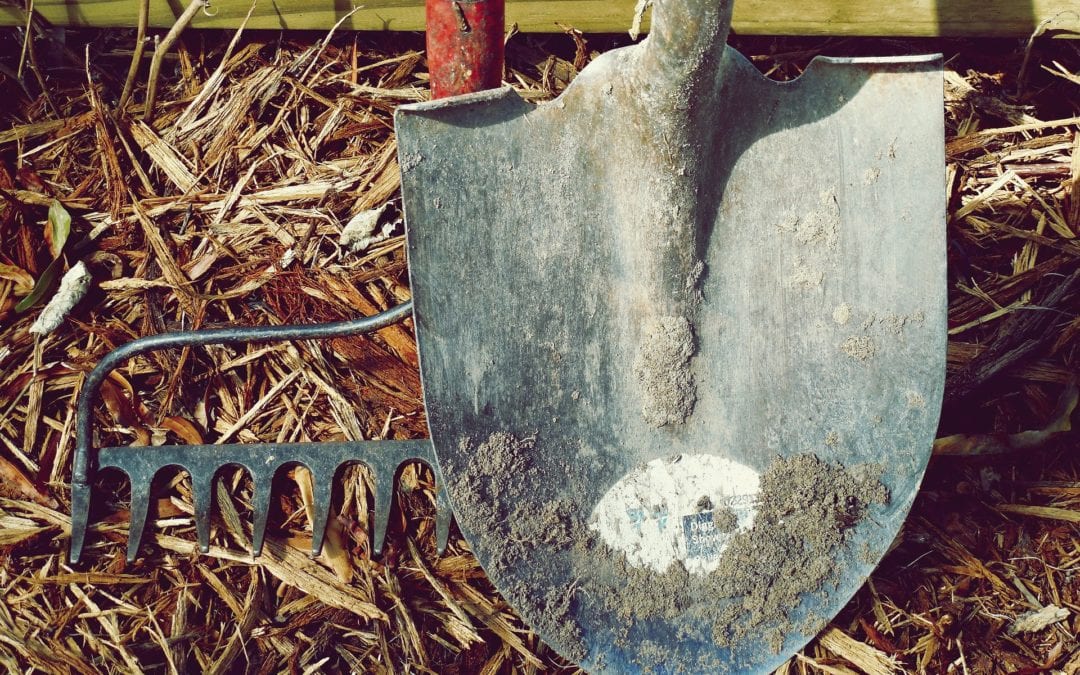The spring gardening season will be here before we know it, so today we’re sending out a few reminders to be prepared for it. Updated 2024: Make sure you come to our Planting and Maintaining a Family Home Orchard seminar this February with David Rodriguez, Horticulturist for Texas A&M Agrilife Extension Services of Bexar County. David always packs the house and comes with a ton of gardening knowledge and tips to share, as well as answers for your gardening questions. Make plans to join us for this free event and learn all you need about growing delicious fresh fruit and get variety recommendations for our area. Until then, check out a few gardening tips we think will also help you get ready for spring.
Buy your spring weed pre-emergents now while they are in stock. Besides fertilizing your lawns, applying pre-emergents is one of your best defenses against a weed invasion in your turf. Application usually takes place in mid -late February (depending on the temperatures). Pre-emergents prevent weed seeds from germinating, so applying this in a timely manner is imperative for success. We like Crew pre-emergent which is comparable to the now discontinued Amaze. Read labels and follow proper instructions. Don’t wait until the weeds have sprouted, and don’t wait until the last minute to buy your products.

Start spring tomatoes. You can start seeds indoors or buy young transplants and keep them protected inside from the cold until it warms up enough in March to plant in the garden. The key is to get the tomatoes early while we have our best selection of seeds and transplants. We have a relatively short growing season and the heat of our brutal summers shuts down tomato fruit production. So the sooner you grow a larger, more mature plant, the sooner they produce and the sooner you can harvest and enjoy your delicious, juicy tomatoes. We’re getting our tomato expert scheduled for aclass and expect to be announcing it in February.
Take care of your flowers, both cold weather and warm weather. Peak flowering season for cool season annuals happens in March and April so keep fertilizing, every 6 to 8 weeks, for strong growth and beautiful blooms. We like the liquid fertilizer Big Bloom from FoxFarm.
Warm season spring annuals can be started indoors. They will need plenty of light either from a bright sunny window or professional grow light so that they don’t grow spindly and leggy reaching for light. They can head into the garden mid March depending on spring weather.

Prune fruit trees before March and before new spring buds swell. Remove suckers, water sprouts, rubbing/crossing branches, and any dead or diseased branches. If you have fruit trees that are at least one year old they should be fertilized.
Spraying fruit trees with horticultural dormant oil begins this month. This protects fruit trees from overwintering pests and their eggs, helping to also prevent them during the growing season. NEVER spray spring fruit trees that are in bloom or you risk killing off the pollinators. And take care not to spray the oil if temperatures are predicted to fall below 40° within the next 24 hours.
Finish up planting trees and shrubs this month for best results. While fall is the best time for planting trees, shrubs, and woody perennials, you can still be successful planting them in early spring. Your goal is to give them as much time as they can have to get there roots established so they are better able to withstand the hot temperatures of the summer with the least amount of stress. Use our easy to follow tree and shrub guide for successful planting.

Hope these tips get you in the mood for spring gardening season.
~The Happy Gardener, Lisa Mulroy


Hi! The recent cold freeze devastated my young avocado plants. The leaves are all brown and droopy. What can I do to help them?
Wilting and flaccid looking leaves is a natural response to low temperatures in avocados. Did you cover them and attempt to protect them during the freezing period? If so, it is probably just too early to tell any extent of injury. While you may be able to see some damage, the true extent of the damage to larger branches, trunks, and rootstocks may not appear many more months. Do NOT prune or make final judgements on any damage until spring when new growth appears. You should continue to protect the trees from future freeze damage. Leave the damaged areas alone as they may still provide an extra layer of protection. Are they in the ground or in pots?
Thank you for your reply. During the frost, I covered my plants with a light mesh bedliner in my little greenhouse. The greenhouse has vents on both sides and is made of plastic material. The plants are in pots. I am not sure of the varieties I have. Do you think I should bring the plants indoors? My goal is to grow fruit-bearing trees. Any suggestions are appreciated! I will happy to share pictures.
If you’re concerned about the warmth in your greenhouse, and if you have a good source of bright light indoors, you might want to move them in for the winter. They do best in temps 60-85 degrees. I’m not sure where you live so not sure how cold it gets for you. It sounds like your plants are also young, so they are even more susceptible to cold damage. I’d take every precaution and hope that they make a healthy turn once the weather warms up.